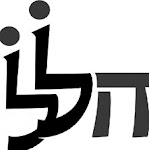The Midrash relates a parable of a king who makes a Chupah but doesn't have a bride. Just like the bride is the purpose of the wedding, Shabbat is the purpose of the world.
Rav Hirsch says that "vayechulu" is related to "tachlis", that the world had reached its purpose when Shabbat arrived.
Another Midrash describes a king who made a signet ring but it didn't have the seal on top. A signet ring has a seal which identifies the person who owns it. Shabbat is the seal on the ring which identifies the worlds owner.
Another Midrash describes a king who made a signet ring but it didn't have the seal on top. A signet ring has a seal which identifies the person who owns it. Shabbat is the seal on the ring which identifies the worlds owner.
The Gemara says when someone says Vayechulu on Friday night he is considered to be a partner to Hashem in the creation of the world. Vayechulu testifies to two things:
1. Hashem created the world in 6 days
2. Hashem rested on the seventh day. The resting on the seventh is also significant.
Hashem finished on the 6th day so it should have said Hashem finished on the 6th and rested on the 7th. Why does it say Hashem finished on the seventh?
Rashi says that a human being doesn't have an accurate awareness of time. He says that Hashem worked until the last instant until Shabbat arrived, because He has a full awareness of time, but to someone watching it would have appeared as if He worked on the seventh.
Rashi says that a human being doesn't have an accurate awareness of time. He says that Hashem worked until the last instant until Shabbat arrived, because He has a full awareness of time, but to someone watching it would have appeared as if He worked on the seventh.
Maharal says that this tells us Hashem's resting on the seventh wasn't coincidental, it was deliberate. Hashem made sure to finish at the exact instant that Shabbat began. This tells us that the resting was significant, not merely a result of the work being finished.
Rashi also says that when Shabbat came, Menucha came, and that completed the world. What is Menucha and how does it complete the world?
Sifsay Chachamim says that it is our taking a break from regular weekday tasks and devoting our time to learning Torah and doing Mitzvot. If not for Menucha, we wouldn't have the opportunity to focus on these things and the world would cease to exist. Menucha therefore completes the world.
Of course, this is the way we rest on Shabbat. How does Hashem rest on Shabbat?
The Midrash relates a conversation between Rabi Akiva and Turnus Rufus. The Roman asked a very obvious question: if Hashem rests on Shabbat, why does the rain fall, why does the wind blow? Is G-d doing anything different than He normally does during the rest of the week? In what way does He rest?
Rabi Akiva responded with a parable about an eruv. He says that if you make an eruv chateiros, it allows you to carry in a domain that belong to several people. But if you own everything, then you don't need the eruv chatzeiros. In the same way, Hashem is the Master of the whole world, so He is permitted to do everything in the whole world.
If the purpose of Shabbos is to remind us that Hashem created the whole world - and continues to actively maintain His creation - then Shabbos has to strengthen this belief. If the world stopped when we stopped, we would instead learn that the world is dependent on us! Since the world keeps going when we stop working, Shabbos serves as a reminder that our work isn't really what keeps things going - it is Hashem's work that continues to maintain the universe.
Shabbos is our opportunity to see through nature and recognize Hashem's Hand in creation and in our continued existence.
Hashem rested by stopping His active creation and switched to an active maintenance phase. Though everything seems "natural" today, we can use Shabbos to peek behind the obvious and discover that Hashem behind it. By testifying to this, we join Hashem in creation, because we fulfill the purpose of the world in recognizing Hashem.

No comments:
Post a Comment